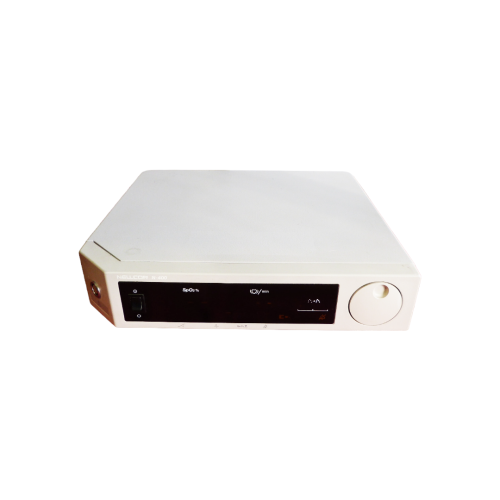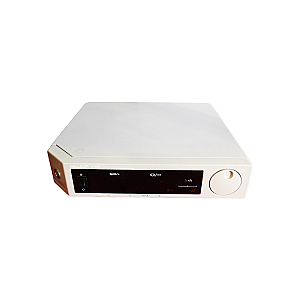The Nellcor N-400 is a pulse oximetry monitor designed for foetal monitoring in hospitals. It continuously measures the functional oxygen saturation (FSpO₂) and heart rate of the foetus during labour and delivery. Thanks to its specific foetal sensor and dedicated patient module, it provides reliable, up-to-date data with each qualified pulse. Its simple operation, with automatic calibration and configurable alarms, provides medical staff with accurate real-time information to improve obstetric care.
N-400 Foetal Oximetry Monitor - Fair Condition


Offer Details
Options :
1* NELLCOR PURITAN BENNETT N-400
Description
N-400: a Device Designed for the Delivery Room
The Nellcor N-400 is a foetal pulse oximeter specially designed to meet the demands of obstetric monitoring. It provides continuous monitoring of functional oxygen saturation (FSpO₂) and foetal heart rate during labour and delivery. This information is essential for assessing the baby's well-being before birth and for quickly detecting any risky situations. The complete system includes the main monitor, a foetal patient module and a dedicated oxygen sensor that attaches to the foetus's temple or cheek. Combining a clear display with reliable measurement technology, the N-400 is a key tool for enhancing perinatal safety and improving clinical decision-making.
Ease of Use and Safety
Designed for hospital use, the N-400 is ready to use immediately after being switched on, with no manual calibration required. An integrated self-test runs automatically to verify proper operation, and oximetry calibration is performed continuously with each use. The display highlights key data: SpO₂, heart rate and signal quality, so that medical staff can focus on what matters most. Configurable visual and audible alarms alert you in the event of desaturation or pulse loss. The optional pulse beep, with a tone that varies according to the saturation displayed, provides an additional reference point during real-time monitoring. This ergonomic design makes the device as simple as it is effective in urgent clinical situations.
Performance and Clinical Integration
The Nellcor N-400 offers two response modes to suit the practitioner's needs: a slow mode, which smooths the data over a period of approximately fifty seconds, and a fast mode, which responds in about ten seconds for more responsive monitoring. The device can also receive an external ECG signal, which enhances clinical assessment. With analogue and digital (RS-232) outputs, it can be easily integrated into hospital systems for data recording or analysis. Compact (32 × 30 × 8 cm) and lightweight (4.1 kg), it fits into any obstetric environment. Compliant with international medical safety standards (IEC Class I, Type BF), it ensures reliable and continuous use, making it an essential asset in modern foetal monitoring.
Features
- Continuous monitoring of foetal saturation and pulse
- Self-test at start-up and automatic calibration
- Clear display with visual and audible indicators
- Optional pulse beep with variable pitch depending on SpO₂
- Two measurement modes to adapt responsiveness
Technical Details
- Measurement range: SpO₂ 0–100%, heart rate 0–250 bpm
- Accuracy: ±3 bpm between 30 and 240 bpm
- Response modes: slow (≈ 50 s), fast (≈ 11 s)
- Alarms: desaturation and pulse loss (audible and visual, adjustable volume)
- ECG input: high level from a foetal monitor
- Connectivity: analogue outputs (0–1 V or 0–10 V), RS-232 (1200 to 19200 baud)
- Dimensions/weight: 32 × 30 × 8 cm, 4.1 kg
- Operating conditions: +5 °C to +40 °C, 15–95% RH
Compatible Accessories
- Nellcor Puritan Bennett foetal sensor (reflection sensor)
- N-400 foetal patient module
- Analogue cables and RS-232 cable
- ECG interface cable
- SRC-4 FSpO₂ tester